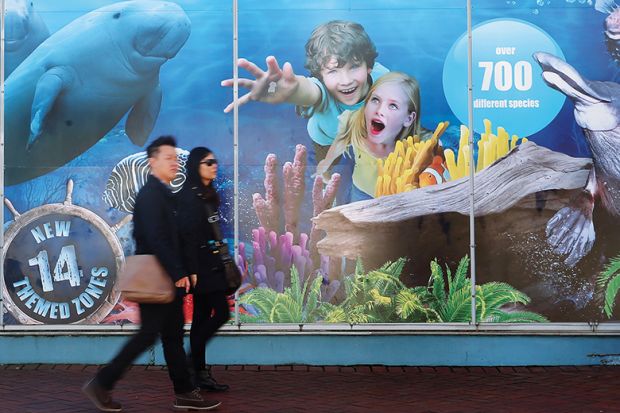Stiff competition from the northern hemisphere, rather than frosty relations between China and Australia, could have dampened Chinese student flows into Australian universities – and if that is the case, vice-chancellors could be in for more bad news when diplomatic tensions begin to bite.
The number of Chinese people approved to study at Australian higher education institutions increased by 4.2 per cent in the second half of last year, compared with the equivalent period in 2016, according to the Department of Home Affairs.
However, the growth was exclusively among applicants who were already in Australia. The number of Chinese who successfully applied from overseas was unchanged, suggesting that Australia is now recycling its most lucrative students.
The figures signal an end to half a decade of strong growth. Higher education visa awards to people applying inside China had increased by between 15 per cent and 30 per cent a year over the five previous financial years.
Australian education providers have been bracing for a downturn following recent criticism of the country’s universities by Chinese authorities and media. China’s Ministry of Education and its embassy in Canberra have warned students about safety in Australia, while its newspapers have carried stories about expensive Australian degrees that do not lead to jobs.
China watchers interpret these moves as retaliation over Australia’s proposed foreign interference laws and its consideration of freedom of navigation exercises in the South China Sea, among other matters.
However, the chief executive of the International Education Association of Australia said it was unlikely that the recent adverse commentary about Australia had triggered the stalled growth in visa applications from China.
Phil Honeywood said that students who had received visas late last year would have chosen their destinations months beforehand, and there would be a “lag time” before tensions between China and Australia impacted on visas.
Other factors may have triggered the stalled growth. Statistics from Australia’s biggest international education competitors, the UK and the US, suggest that the prestige of their institutions may be luring Chinese enrolments away from down under.
In the UK, higher education enrolments from China rose by 4.2 per cent to about 95,000, defying a 1 per cent decline in enrolments from non-European Union countries.
In the US, the number of Chinese higher education students edged past 350,000 after increasing by 6.8 per cent – double the overall international student growth rate of 3.4 per cent.
Elevated competition for Chinese students, on top of an anticipated hit on enrolments because of the diplomatic tensions, could prove a nightmare scenario for Australia’s top-tier universities.
While Chinese students make up close to 40 per cent of foreign enrolments at Australian universities, they comprise up to two-thirds of international students at the research-intensive Group of Eight institutions, where up to one-sixth or more of revenue comes from Chinese students’ fees.
The flatlining of offshore visa grants has been masked by a sharp increase in the number of Chinese higher education students applying from within Australia.
Mr Honeywood said the growth in onshore visa applications reflected a “try before you buy” trend among Chinese students, combined with new rules that made it easier for them to obtain fresh visas after they had arrived in Australia. “They’ve come with a view to do an initial course and discovered that they can stay on.”
He said that Chinese students were also being targeted by colleges whose business model relied on poaching students from other Australian providers, rather than recruiting from offshore. “It’s a much bigger issue than people realise,” he said.
Register to continue
Why register?
- Registration is free and only takes a moment
- Once registered, you can read 3 articles a month
- Sign up for our newsletter
Subscribe
Or subscribe for unlimited access to:
- Unlimited access to news, views, insights & reviews
- Digital editions
- Digital access to THE’s university and college rankings analysis
Already registered or a current subscriber?

